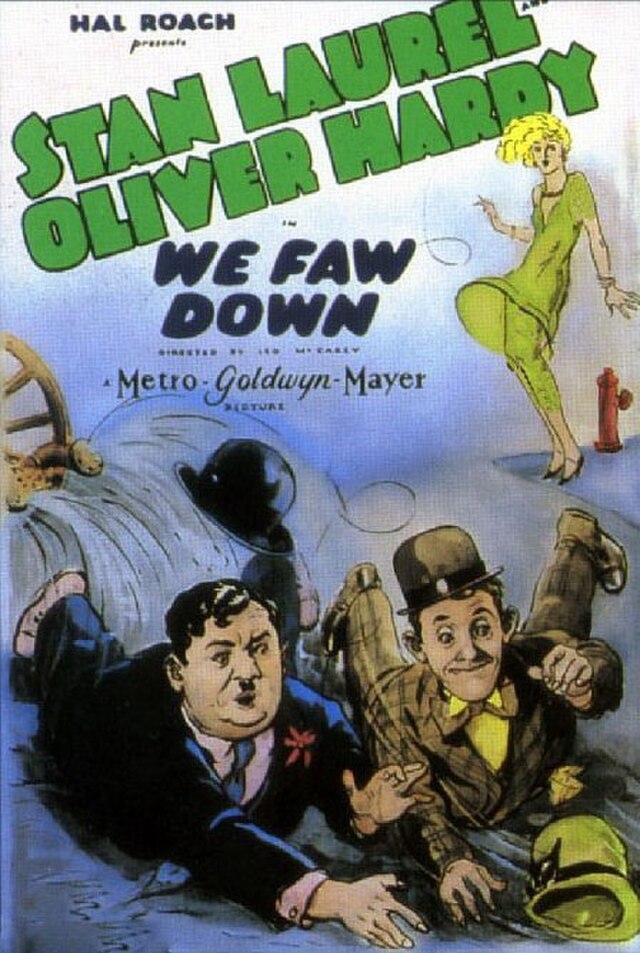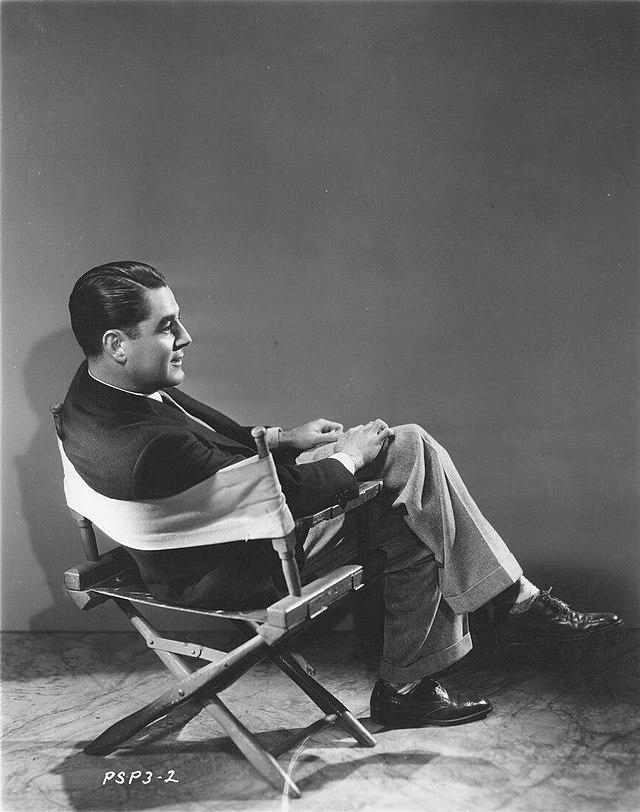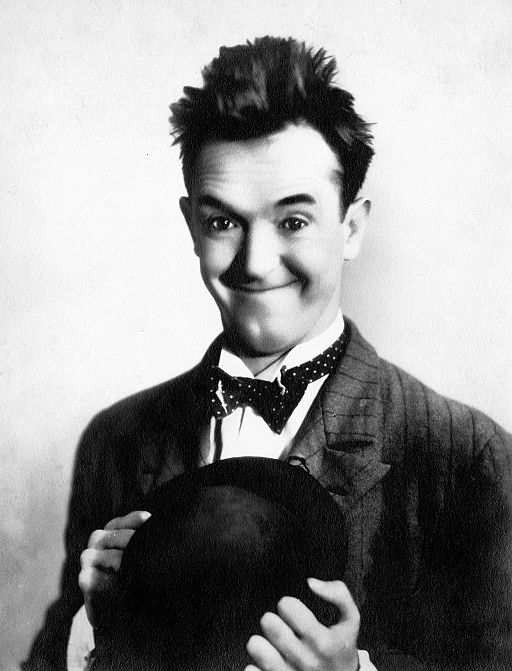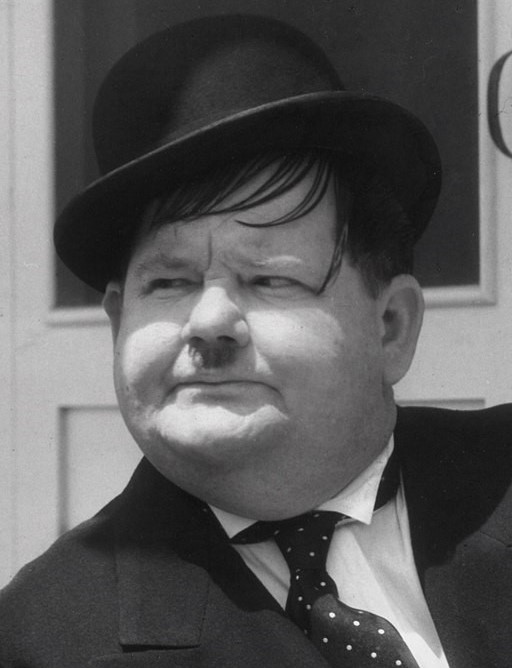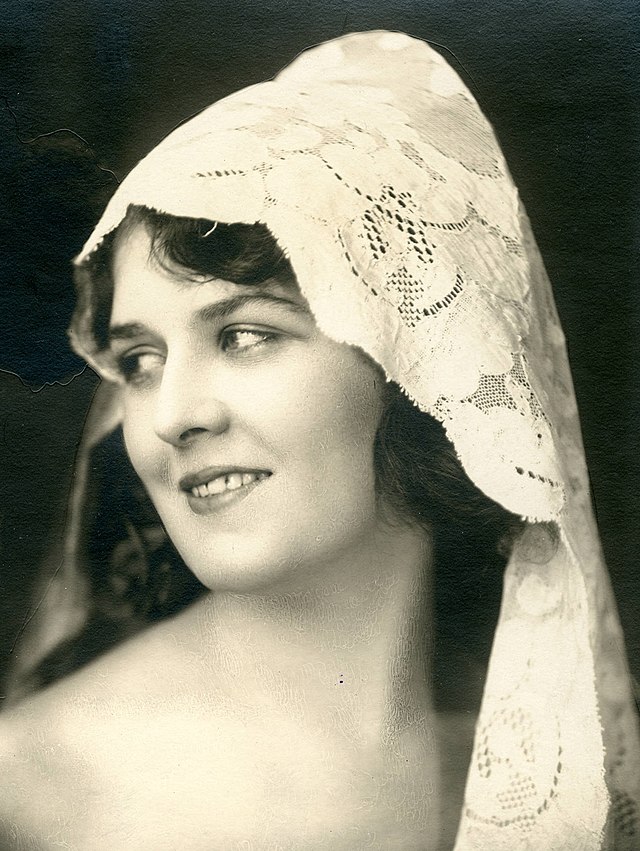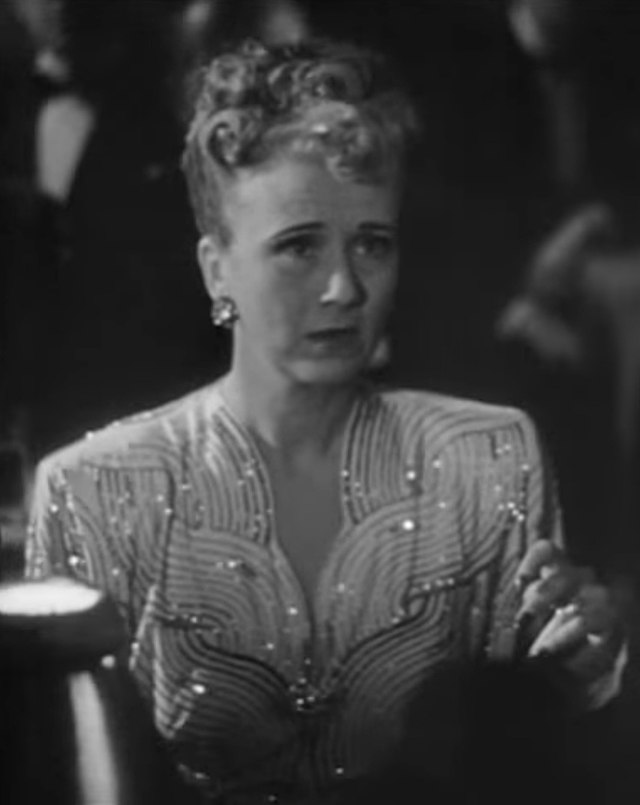We Faw Down - 1928
back| Released by | Metro-Goldwyn-Mayer |
| Director | Leo McCarey |
| Producer | Hal Roach |
| Script | Leo McCarey |
| Cinematography | George Stevens |
| Music by | Silent film |
| Running time | 20 minutes |
| Film budget | Not officially documented |
| Box office sales | Unknown |
| Main cast | Stan Laurel - Oliver Hardy - Vivien Oakland - Bess Flowers - Kay Deslys -Dorothy Coburn |
We Faw Down
A Hilarious Tale of Two Friends whose Innocent Lies Spiral into Chaotic Misadventures
We Faw Down (1928), directed by Leo McCarey, is a silent short film starring the iconic comedy duo Stan Laurel and Oliver Hardy.
The plot revolves around Stan and Ollie lying to their wives about attending a card game, only to get into trouble with two women and their gangster boyfriends.
The film is a showcase of classic slapstick and situational humor, with expertly timed physical comedy and the duo’s trademark misadventures.
Related
We Faw Down – 1928
Summary and Analysis
We Faw Down is a classic two-reel silent comedy that revolves around the mischievous misadventures of Stan Laurel and Oliver Hardy, who play their typical roles as bumbling friends, Stan and Ollie. The film begins with the two trying to get out of the house for an afternoon of fun. They tell their wives that they’ve been invited to a card game by their boss, hoping to use this as an excuse to enjoy a bit of freedom. Their wives, played by Vivien Oakland (Mrs. Hardy) and Bess Flowers (Mrs. Laurel), are skeptical but let them go.
Instead of going to a card game, Stan and Ollie head out in search of excitement. Their plans quickly derail when they meet two women (Kay Deslys and Dorothy Coburn) who are eager for company. The men, delighted by the attention, agree to go to the women's apartment for some fun, attempting to conceal their true intentions from their wives.
While the men are in the apartment, their wives grow suspicious, especially after hearing that there was no card game. Their suspicion leads them to search for their husbands. Meanwhile, at the women's apartment, comedic chaos ensues when the women’s gangster boyfriends unexpectedly return. Stan and Ollie are forced to hide, and the scene turns into a slapstick farce, with the men narrowly avoiding discovery in increasingly ridiculous ways.
Eventually, the tension mounts as Stan and Ollie attempt to sneak out of the apartment building, only to get drenched by a fire hose and caught in a series of escalating accidents. In a final twist, when they return home soaked and bedraggled, their wives discover their lie, and both men are forced to confront the consequences of their failed deception.
Analysis of We Faw Down:
This film showcases many hallmarks of the comedy duo's work, especially their knack for blending physical comedy with situational humor. The setup is simple: two men, unhappy with the restrictions of domestic life, seek adventure but are outwitted by their own incompetence. The humor lies in their clumsiness and bad decision-making, as well as the increasingly absurd situations they stumble into.
Character Dynamics
Stan and Ollie's dynamic is central to the film’s comedy. Stan is the innocent, dim-witted one, while Ollie is the pompous, more assertive of the two, though often equally foolish. Their contrasting personalities provide endless opportunities for humor, especially in scenes where Ollie's attempts at controlling the situation are undone by Stan's naïveté or both of their shared stupidity.
Physical Comedy
As a silent film, much of the humor relies on physical comedy, a genre in which Laurel and Hardy excel. From exaggerated facial expressions to elaborate pratfalls, they engage in a kind of universal humor that doesn’t need dialogue to be effective. For instance, their attempts to escape the apartment without being caught are executed through elaborate pantomime and timing, creating a comedy of errors that builds tension and humor simultaneously.
Themes of Deception and Consequence
At its core, We Faw Down is a story about deception and the inevitable consequences of lying. Stan and Ollie try to trick their wives for a moment of fun, but the universe has a way of punishing them through increasingly outlandish circumstances. The wives, in contrast, are portrayed as sharp and resourceful, outwitting their husbands by seeing through the deception. This theme is a recurring one in many of the duo's films, where dishonesty is met with karmic punishment in the form of slapstick disasters.
Social Commentary
On a deeper level, the film reflects the tension between domestic life and male escapism, a common theme in many of Laurel and Hardy's films. The humor arises from the men’s desire to escape from their perceived domestic "prisons," but instead, they find themselves trapped in far worse situations. The film subtly critiques the futility of their attempts at rebellion, as the domestic sphere—represented by their wives—remains all-knowing and ultimately dominant.
Direction and Pacing
Leo McCarey's direction helps to bring out the best in the actors. He was known for his ability to mix heart with humor, and although We Faw Down leans heavily into slapstick, there’s a human element that makes the audience empathize with the foolishness of Stan and Ollie. The pacing is brisk, with each comedic setup leading smoothly into the next, making excellent use of the film’s short running time. McCarey balances the physical comedy with character-driven humor, ensuring that the audience is invested in the misadventures.
Legacy and Impact
We Faw Down is an early example of Laurel and Hardy's mastery of the two-reel format, setting the stage for more complex and longer films in the future. It’s a testament to their ability to turn simple premises into rich comedic gold. The film also played a significant role in cementing their popularity during the silent era, contributing to their rise as one of the most beloved comedic duos in cinema history.
In conclusion, We Faw Down is a quintessential Laurel and Hardy short film. Its blend of physical comedy, situational absurdity, and character-driven humor encapsulates the charm of the duo’s work. While the plot is straightforward, the execution is what makes it memorable, demonstrating their remarkable comedic timing and ability to turn the mundane into the hilarious.
We Faw Down Complete Movie
Full Cast
· Stan Laurel as Stan
· Oliver Hardy as Ollie
· Vivien Oakland as Mrs. Hardy
· Bess Flowers as Mrs. Laurel
· Kay Deslys as the girl
· Dorothy Coburn as the other girl
· Charlie Hall as the disgruntled neighbor
· Sam Lufkin as the policeman
· Frank Brownlee as the gambler (uncredited)
Leo McCarey’s Direction
Leo McCarey’s direction in We Faw Down (1928) reflects his remarkable ability to balance slapstick comedy with human emotion, a hallmark of his extensive career. McCarey, who worked with many comedic talents of the silent and early sound era, played a crucial role in shaping the cinematic persona of Laurel and Hardy. His direction in this film is a prime example of his mastery of comedic timing, character development, and situational humor, all while maintaining a sense of naturalism in an otherwise absurd narrative.
Mastery of Physical Comedy:
As a silent comedy, We Faw Down relies heavily on visual gags and physical humor, and McCarey knew how to make the most of this format. He understood the potential of the medium to convey humor without dialogue, orchestrating elaborate slapstick routines that feel organic and well-paced. Each moment of physical comedy, from Laurel’s childlike clumsiness to Hardy’s grand, pompous missteps, is meticulously choreographed under McCarey’s direction, ensuring that every fall, stumble, and mishap lands perfectly for the audience.
McCarey had an instinct for building anticipation through these scenes. He often stretched moments of near-disaster just long enough to heighten the audience’s expectation before delivering the final, humorous payoff. A key example is when Stan and Ollie attempt to sneak out of the women’s apartment, and the situation escalates as they struggle with small physical challenges. McCarey's patience with these moments turns simple actions—like hiding from a returning boyfriend—into intricate, laugh-out-loud sequences.
Character-Driven Humor:
While McCarey excelled in physical comedy, his true genius lies in character-driven humor, something that sets We Faw Down apart from many other slapstick comedies of the time. He recognized that Laurel and Hardy’s strength lay not just in their pratfalls but in the personalities of their characters. Instead of reducing the film to a series of disconnected gags, McCarey built the comedy around the duo’s well-established character traits—Stan’s innocent foolishness and Ollie’s overconfidence and vanity.
By focusing on the relationship between Stan and Ollie, McCarey created a deeper, more relatable form of comedy. Their friendship is at the heart of the film, and the humor arises not just from the situations they find themselves in, but from the way they react to those situations together. McCarey made sure that their interactions felt authentic, and this allowed audiences to invest emotionally in the characters’ misfortunes. For instance, Ollie’s repeated scolding of Stan for his blunders is funny, but also imbued with a sense of affection and helplessness that adds depth to their dynamic.
Subtle Social Commentary:
Although We Faw Down is primarily a light-hearted comedy, McCarey injects it with subtle social commentary, something he would do more overtly in his later films. The central theme of the film—two men trying to escape from their domestic responsibilities—mirrors a common narrative in many early 20th-century comedies, but McCarey approaches it with a unique touch. Instead of portraying the men as heroic figures seeking freedom, he subtly critiques their attempts at rebellion by emphasizing their incompetence and the inevitability of their failure.
The wives in the film are depicted as strong, suspicious, and ultimately smarter than their husbands, a reversal of traditional gender roles in comedies of the time. McCarey uses this dynamic to highlight the absurdity of Stan and Ollie’s desire to escape domestic life, showing that they’re not capable of handling even a few hours of freedom without getting into trouble. This thematic layer gives the film a sense of relevance beyond its surface-level comedy, reflecting the tensions between domesticity and male independence in the early 20th century.
Pacing and Structure:
McCarey’s direction is marked by a keen sense of pacing. In We Faw Down, the film flows effortlessly from one scene to the next, with no wasted moments. McCarey ensures that each gag builds on the last, creating a steady escalation of comedic tension. This is particularly evident in the apartment sequence, where the situation spirals out of control with each new complication—the arrival of the boyfriends, the need to hide, and the increasingly desperate attempts to avoid detection. The film’s short running time (about 20 minutes) doesn’t feel rushed because McCarey is so adept at timing each comedic beat perfectly.
He also manages to balance broad slapstick with quieter, more nuanced moments. For example, there’s a delightful contrast between the boisterous chaos of the apartment scenes and the more restrained awkwardness of the men trying to sneak back home afterward, soaking wet and ashamed. McCarey understood the value of pacing, ensuring that the audience never feels overwhelmed by the comedy but instead is carried along with the flow of the story.
Empathy and Warmth:
McCarey brought a sense of warmth and humanity to his direction, even in a farcical short like We Faw Down. While the film is packed with slapstick humor, it’s grounded by the audience’s empathy for Stan and Ollie. They’re not just caricatures or one-dimensional clowns; under McCarey’s direction, they’re lovable, well-meaning, but hopelessly flawed individuals. The director’s ability to make audiences laugh at their misadventures while also feeling sympathy for their plight is one of his key strengths.
In We Faw Down, this empathy comes through in the way McCarey allows moments of vulnerability to shine through the comedy. Stan and Ollie’s expressions of frustration, embarrassment, and guilt add an emotional layer to the film, turning what could have been a series of mindless gags into a more meaningful experience. This approach would become a defining feature of McCarey’s later work, particularly in his more sentimental films like Make Way for Tomorrow and The Awful Truth.
Leo McCarey’s direction of We Faw Down showcases his deep understanding of both comedy and character. He was able to elevate a simple slapstick premise into a more nuanced and layered film, using physical comedy, character dynamics, and subtle social themes to create a story that resonates beyond its comedic surface. McCarey’s talent for blending broad humor with human warmth is on full display, making We Faw Down not just a funny film but a richly enjoyable one, demonstrating his influence in shaping the Laurel and Hardy legacy.
Stan Laurel’s Performance in We Faw Down
Stan Laurel’s performance in We Faw Down (1928) is a masterclass in silent-era comedy, showcasing his talent for physical humor, subtle expressions, and impeccable comedic timing. Laurel, playing his typical character, brings his signature brand of innocent, childlike foolishness to the film, allowing him to evoke both laughter and empathy from the audience. His performance in this short film exemplifies why he became such a beloved figure in the world of comedy.
Physical Comedy and Timing:
Laurel was a physical comedian of extraordinary ability, and We Faw Down highlights this talent throughout its running time. He engages in a wide range of pratfalls, clumsy movements, and exaggerated gestures, all executed with precise timing. Unlike many silent comedians who relied on broad, chaotic slapstick, Laurel’s physical comedy is often delicate and nuanced. His movements are carefully controlled to appear spontaneous and accidental, which enhances the humor.
For example, in the apartment scenes, when Stan and Ollie are trying to hide from the women’s boyfriends, Laurel's awkwardness is highlighted through his body language—fumbling around, accidentally tripping or bumping into objects, all while maintaining an air of innocence. His falls and mishaps are not overly dramatic but rather gently absurd, which contrasts beautifully with Hardy’s larger, more forceful physicality. This interplay makes Laurel’s comedic style distinct; he seems almost weightless, as though he’s floating through his blunders, completely unaware of the chaos he causes.
Laurel’s ability to stretch out physical gags, such as clumsily trying to avoid getting caught or hiding in absurd places, builds tension and anticipation, leading to even bigger laughs when he finally meets his inevitable mishap. This comic buildup is central to his approach, as his character often seems just on the edge of success before hilariously failing.
Innocence and Naïveté:
A defining feature of Stan Laurel’s screen persona is his innocence and naïveté, traits he employs brilliantly in We Faw Down. Unlike Hardy’s character, who often overestimates his intelligence and abilities, Laurel’s Stan is genuinely clueless. This cluelessness is endearing rather than frustrating, and it serves as the foundation for much of the film’s humor.
In We Faw Down, Laurel’s character goes along with Ollie’s plan to lie to their wives without fully grasping the implications of their deception. His wide-eyed expressions and childlike curiosity give the impression that he’s simply following along, never fully understanding why they need to hide or sneak around. His facial expressions—particularly his wide, innocent eyes and confused frowns—are a critical part of his comedic toolkit. Laurel often acts as though he’s on the brink of understanding, only to miss the point entirely, which makes his reactions all the more hilarious.
For instance, when the women’s boyfriends return, it’s Laurel’s slow comprehension of the danger that adds layers to the comedy. His delayed reactions are subtle but impactful; the audience can see the gears turning in his head, but it takes just a moment too long for him to act, resulting in slapstick chaos. This sense of being slightly out of sync with the world around him is what makes his character so likable and so funny.
Subtle Facial Expressions:
In the silent film era, performers had to convey emotion and comedy without the use of dialogue, and Stan Laurel was a master of using subtle facial expressions to enhance the humor. In We Faw Down, much of the film’s comedic weight rests on his expressive face. He can communicate a wide range of emotions—confusion, panic, guilt, and delight—with just the smallest changes in his expression.
One of Laurel’s most iconic expressions is his “blank stare,” which he uses to great effect in this film. When faced with an impossible situation, like being trapped in the women’s apartment while their boyfriends arrive, Laurel’s wide-eyed, slack-jawed look of bewilderment speaks volumes. This expression creates an immediate connection with the audience, who can’t help but laugh at his obliviousness while simultaneously sympathizing with his predicament.
Laurel also excels at breaking the fourth wall, often glancing toward the camera with a knowing look, as if to share a private joke with the audience. In We Faw Down, there are several moments where he subtly acknowledges the absurdity of the situation, inviting the viewer to laugh along with him. This kind of intimate interaction with the audience is a key part of Laurel’s charm and helps to make his performance feel personal and engaging.
Partnership with Oliver Hardy:
Stan Laurel’s performance cannot be fully appreciated without acknowledging his partnership with Oliver Hardy, which is central to the success of We Faw Down. The two had an extraordinary comedic chemistry, with Laurel playing the “childish fool” and Hardy the “pompous, frustrated leader.” This dynamic is at the heart of the film’s humor, and Laurel’s ability to complement Hardy’s performance is one of his greatest strengths.
In We Faw Down, Laurel’s character often looks to Hardy for guidance, only to misinterpret or fumble his instructions. Hardy’s frustration with Laurel’s mistakes becomes funnier because of how earnestly Laurel tries to follow along, oblivious to the chaos he’s creating. The contrast between the two—Hardy’s huffing and puffing versus Laurel’s silent confusion—creates a rhythm of comedy that is both dynamic and endearing.
Laurel’s understated performance plays off Hardy’s more exaggerated reactions, and this balance between the two performers elevates both of their comedic styles. Laurel’s performance alone is funny, but it becomes even more effective when juxtaposed with Hardy’s reactions, making their interactions the centerpiece of the film.
Vulnerability and Empathy:
What sets Laurel apart from many comedians of the time is his ability to evoke empathy through his vulnerability. While his character is often the source of the film’s chaos, there is a sweetness and sincerity to his performance that prevents the audience from ever feeling frustrated with him. Laurel’s innocence and good-natured spirit shine through, even when he’s making the most ridiculous mistakes, and this vulnerability makes him a sympathetic figure.
In We Faw Down, when things begin to spiral out of control, Laurel’s growing panic and helplessness are visible. The audience laughs at his misfortune, but they also feel for him, which adds an emotional layer to the comedy. His childlike demeanor invites the viewer to root for him, even as he stumbles through one disaster after another. This mix of vulnerability and humor is a rare quality that Laurel consistently brought to his performances.
Conclusion:
Stan Laurel’s performance in We Faw Down is a perfect showcase of his talents as a silent film comedian. His physical comedy, expressive face, and ability to play the fool with such innocence make his character both hilarious and endearing. Laurel’s subtle approach to slapstick, combined with his childlike vulnerability, creates a unique comedic presence that is perfectly balanced by his partnership with Oliver Hardy. In this film, as in many others, Laurel proves that he is a master of blending humor with heart, making We Faw Down a timeless example of silent comedy at its best.
Classic Scenes from the Movie
We Faw Down (1928) is filled with classic scenes that showcase the impeccable physical comedy, timing, and interplay between Stan Laurel and Oliver Hardy.
The “Card Game” Lie
One of the key setups for the film is the lie that Stan and Ollie tell their wives to escape for a day of fun. The scene itself is humorous because of the awkwardness with which they try to deceive their wives. Laurel, in particular, portrays a nervous innocence, unable to keep a straight face while telling the story of a non-existent card game. The humor lies in the way both men are clearly not convincing, but their wives allow them to leave anyway, setting the stage for the chaotic events to follow.
This scene is a great example of the contrast between the two characters—Hardy takes the lead with more confidence, while Laurel's bumbling, hesitant behavior undercuts the lie and adds to the comedy. It’s a subtle but effective moment that sets the tone for the rest of the film.
The Meeting with the Women
A memorable and pivotal scene occurs when Stan and Ollie, thinking they’ve successfully gotten away from their wives, encounter two women (played by Kay Deslys and Dorothy Coburn) who invite them to their apartment. This moment introduces the film’s central conflict—Stan and Ollie trying to have fun while concealing their activities from their wives.
The humor in this scene comes from the men’s excited yet bumbling response to the attention they’re receiving. Laurel’s character is especially endearing, acting shy and awkward around the women, which contrasts with Hardy’s more pompous attempts at suave behavior. The comedic tension builds as the audience anticipates that their wives will eventually find out.
The Chaos in the Apartment
One of the film’s most famous scenes unfolds in the women’s apartment, where Stan and Ollie’s attempts to enjoy themselves are interrupted by the unexpected return of the women’s gangster boyfriends. This scene is pure slapstick gold, as both men desperately try to avoid being caught by the gangsters while hiding in various absurd places.
The physical comedy here is executed perfectly. Laurel, with his small, delicate movements, hides under furniture or ducks into improbable spots, while Hardy’s larger frame causes more chaos as he tries to find a hiding place. There’s a particularly funny moment when Laurel’s attempts to hide are foiled by his own clumsiness, bumping into objects or awkwardly crouching in plain sight.
McCarey’s direction shines here, using the confined space of the apartment to escalate the tension. The absurdity of the situation—the men trying to avoid the gangsters, all while still trying to sneak out of the apartment before their wives discover them—creates a relentless comedic rhythm that defines the film.
The Drenching with the Fire Hose
One of the film’s climactic moments comes when Stan and Ollie, after finally managing to sneak out of the apartment, get caught in a series of accidents outside the building. The standout gag here involves a fire hose drenching both men, leaving them soaking wet as they attempt to maintain their dignity while walking home.
This scene is classic Laurel and Hardy—a simple situation escalates into a comedic disaster. The sight of the two, bedraggled and dripping with water, trying to preserve what little remains of their plan to deceive their wives, is a perfect example of the duo’s ability to turn a minor setback into a full-blown comedic spectacle. Laurel, with his sad, bewildered expressions, makes the moment both hilarious and oddly pitiful.
The Wives’ Revenge
The final scene is a classic moment of Laurel and Hardy getting their comeuppance. When they return home soaked and beaten, their wives confront them, having discovered the truth. The scene is both humorous and satisfying, as the men, caught in their lie, have no choice but to face the consequences.
In true slapstick fashion, the wives exact their revenge, and the men’s humiliation is complete. It’s a typical Laurel and Hardy ending, where the duo’s elaborate schemes unravel in the most disastrous way possible. The final image of the two men facing their furious wives, utterly defeated, is a fitting conclusion to the series of mishaps that define the film.
Conclusion
These scenes from We Faw Down are classic examples of the type of comedy that made Laurel and Hardy so beloved. The film’s humor is rooted in the contrast between Stan’s childlike innocence and Ollie’s pompous overconfidence, combined with brilliant physical comedy and the escalating absurdity of the situations they find themselves in. Each of these scenes highlights the duo’s talent for transforming simple, everyday moments into comedic masterpieces through their impeccable timing, physicality, and expressive performances.
Awards and Recognition:
We Faw Down (1928) did not receive any formal awards or nominations at the time of its release. This is primarily because the concept of structured film awards, such as the Academy Awards, was still in its infancy. The first Academy Awards ceremony was held in 1929, and at that time, short films like We Faw Down were not typically recognized in award categories.

